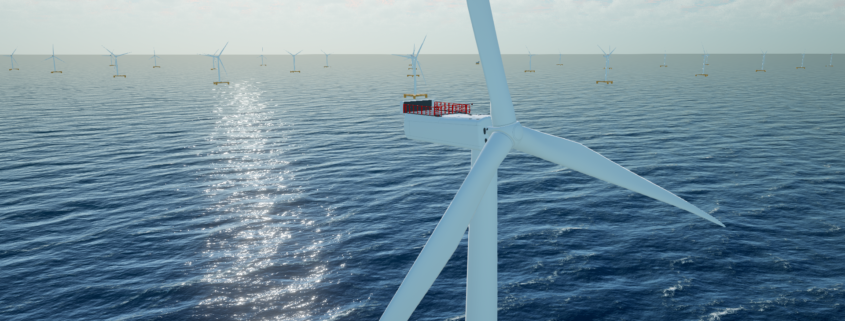The Crown Estate identifies Gwynt Glas Area of Search within its Plans to Deliver 4GW of Celtic Sea FLOW
Gwynt Glas, a DP Energy and EDF Renewables UK joint venture, welcomes the announcement from The Crown Estate identifying five Areas of Search in the Celtic Sea from which 4 GW of floating wind project development sites will be competitively tendered in mid-2023. The announcement confirms that virtually all of the broad Gwynt Glas’ Area of Search is included in The Crown Estate’s seabed leasing plans for the Celtic Sea.
Gwynt Glas could provide power for approximately 927,400 homes* and contribute a significant part of the Crown Estate’s ambitions for 4GW of capacity in the Celtic Sea. The Crown Estate has commissioned research that indicates that there is significantly more capacity to come in the future, positioning the UK Celtic Sea as a leading global FLOW market.
Nancy McLean, Gwynt Glas Project Director said “We welcome this announcement. It sends a clear signal to the supply chain and investors that the development of FLOW in the Celtic Sea is progressing at pace and significant scale. Clarity on The Crown Estate’s leasing programme is crucial to meeting net zero targets and maximising the economic and social benefits of this new green industry for the South Wales and South West England regions. We look forward to consulting further with The Crown Estate as they refine Areas of Search into smaller final Project Development Areas, within which proposed windfarms like Gwynt Glas could be sited.“
Gwynt Glas has been conducting remote aerial surveys for marine mammal and birds since Spring 2021 and has started early-stage consultation with commercial fisheries, and shipping and navigation stakeholders. Following wider stakeholder consultation the floating offshore wind farm site will be refined and finalised to a much smaller area prior to submitting an Application for Lease in 2023.
* Load factors based on the five year rolling averages on unchanged configuration basis using Table 6.5 of ‘Digest of UK Energy Statistics’ – latest figures as per July 2019 release. Based upon the average domestic electricity consumption per home (temperature corrected) per the Energy Consumption in the UK (published July 2019, Table C9 of ECUK: Consumption data tables).



